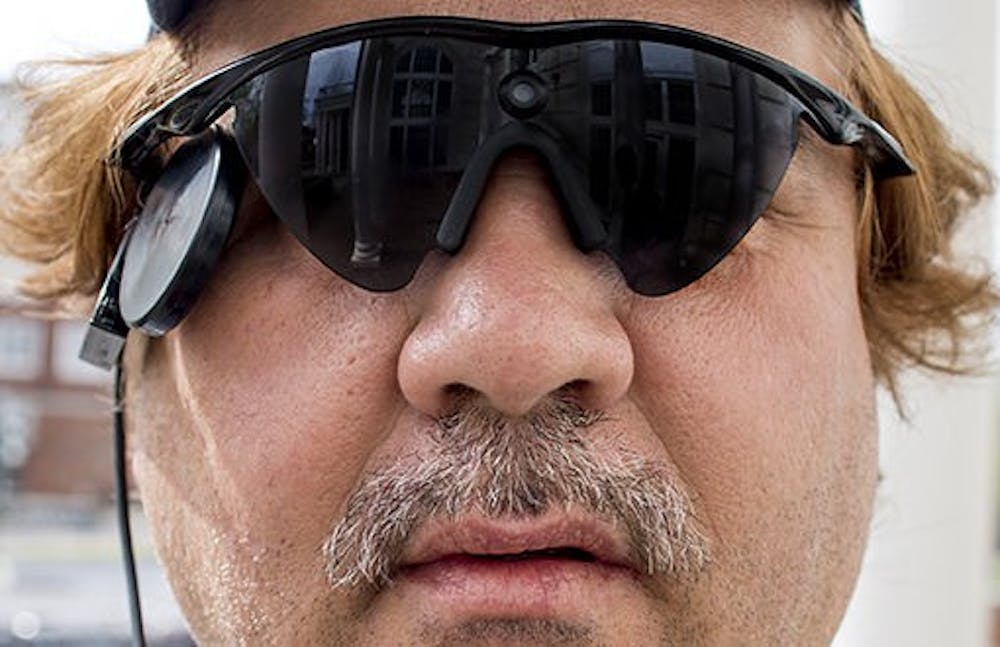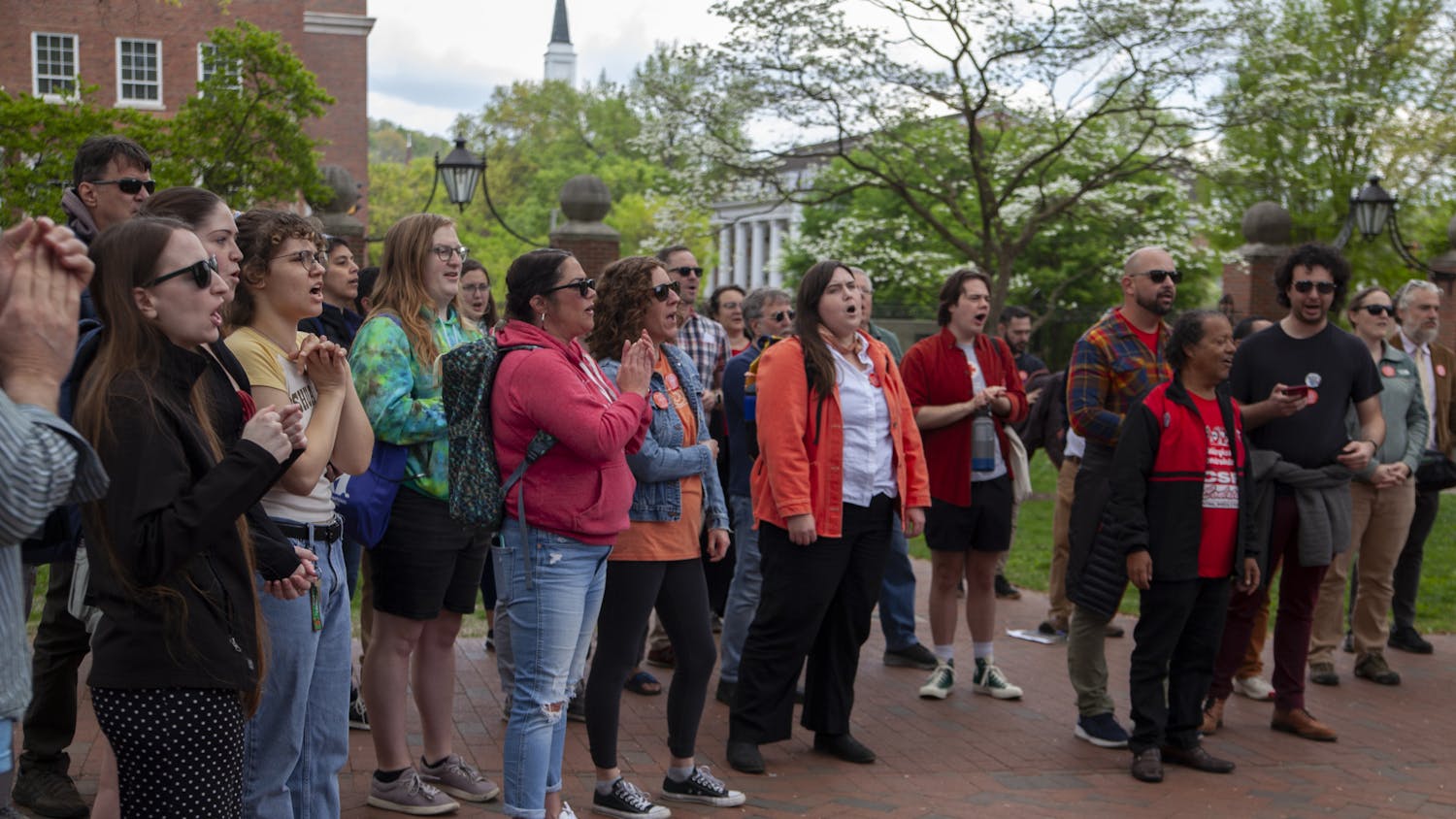No one else in Ohio has gotten the treatment.
After 15 years of living in complete blindness, David Parker thought he would never see his five grandchildren’s faces.
But after receiving a surgical implant in December that he called “a miracle,” the 47-year-old Athens resident’s wish has become more possible than he ever imagined.
“I was able to see my children enough to recognize, but my grandkids I’ve never seen,” Parker, who now wears a pair of specialized, black-tinted glasses, said. “I waited for this all my life.”
Parker is one of 126 patients with retinitis pigmentosa who has received the newly U.S. Food and Drug Administration-approved Argus II Retinal Prosthesis System, pioneered by Second Sight Medical Products, Inc.
{{tncms-asset app="editorial" id="2f40793c-dcb3-11e4-9ff8-53d314de3087"}}
The FDA first gave the thumbs up to his so-called “bionic eye” in February 2013, and Health Canada approved the vision apparatus in December 2014 — making it available in 16 major markets between the two countries, according to Second Sight’s website.
The nearest implant centers are in Ann Arbor, Michigan, and Cleveland.
Doctors diagnosed Parker with retinitis pigmentosa at the age of four. Growing up in Toledo, he learned to read braille at 6 years old, but after years of progressively weakening retinas, lost total sight at about age 30.
After that, Parker moved to Athens in December 2012 to start a vending company called “Grumpy’s Vending,” where he oversees vending machines in 20 Ohio University buildings.
“I couldn't distinguish … one thing from another. Everything was just one big blur,” Parker said. “I didn't follow the research (because) it let me down. Until they came up with (the Argus II), I figured that I wouldn't be able to see anything.”
Parker first learned about the Argus II and its accompanying four-hour surgery through his brother, who saw it on television. Parker researched the procedure and discovered the University of Michigan Kellogg Eye Center in Ann Arbor offered the surgery under certain prerequisites: being older than 25, having been able to see before, having cataract lenses and being willing to commit to the process.
Parker met all of those requirements.
“As Buckeye fan, it (was) kind of hard for me to go (to the University of Michigan),” Parker joked.
He later received an eye test from a local doctor and submitted the results to the institution. In September 2014, the institution informed Parker that he was qualified.
Parker’s surgery was paid for with insurance, but the procedure typically costs $150,000, according to VisionAware, a website that provides resources to those with vision loss.
Betsy Nisbet, a spokeswoman for the center, said surgeons at Kellogg Eye Center have performed six surgeries since the FDA’s approval.
“When the signal gets to the chip that's on your retina, it's transmitted to your brain through your optic nerves,” Parker said. “Some of my nerves thinned out so they weren't sure if it would work.”
Yet, on Dec. 4, a “great team” of surgeons installed the Argus II chip into Parker’s right eye. Coming out of surgery, he was surprised at how little pain he felt, although he could tell something was in his eye, he said. The surgery, however, did not instantaneously gift him with full vision.
“Everybody thinks you'll be able to see, but that's really not true,” Parker said. “My wife describes it as kind of a silhouette. You have to scan something and then go by what's in your memory bank. That's why you have to had sight in the past.”
After six to eight weeks of healing, Parker returned to the facility “about every three weeks,” where he practiced using the apparatus through various tests, such as following a 2-by-2 inch square on a computer screen.
“The first test they did was they put a square on the screen,” he said. “That really shook me up because I could see the square.”
It was the first thing he had seen in 15 years.
Since the FDA approved the surgery, there have been 24 commercial surgeries in the U.S., 70 commercial surgeries in Europe, and an additional 32 clinical trial surgeries worldwide, Gary Peyser, a spokesman for Second Sight, said.
“David has a very positive attitude, is willing to learn, is very cooperative and helpful and even gives us suggestions on our testing schemes,” said Naheed Khan, an electrophysiologist at Kellogg Eye Center, in an email. “We have learned a great deal from him and we are always impressed by his motivation and commitment.”
The Argus II Prosthesis System works by using a camera on specialized glasses to take in an image and send it to the computer processor worn around the user’s neck. The processor sends instructions through an antenna to the retinal chip, which sends electrical pulses through optic nerves for the brain to decipher.
That process bypasses the damaged photoreceptors in the retina that otherwise would produce sight in a healthy eye.
{{tncms-asset app="editorial" id="b8d0599a-bd39-11e4-a75e-7f6c91085e0a"}}
Parker said images stay five or six seconds before he has to move his head and “refresh” the image, which he considers good, compared to some patients’ one or two second staying power.
“I'm starting to (be) able to recognize shapes … a square versus a circle,” Parker said. “I really have to concentrate, and it's based on light and dark and contrast. The more contrast, the more you're able to visualize and it picks it up.”
Although Parker can only see the shape of his grandchildren at this point, he said that with more practice and new developments with the Argus II — including clearer images and color-vision — he will be able to improve his sight even further.
“The main reason that I did the surgery is to see my grandkids enough to know that they are there,” Parker said. “I can't make out faces right now, but I know if something is there. Once you can distinguish it’s a person other than a wall, and then you distinguish that it's a short person, and that must be my grandkid.”
@LukeFurmanOU
lf491413@ohio.edu






